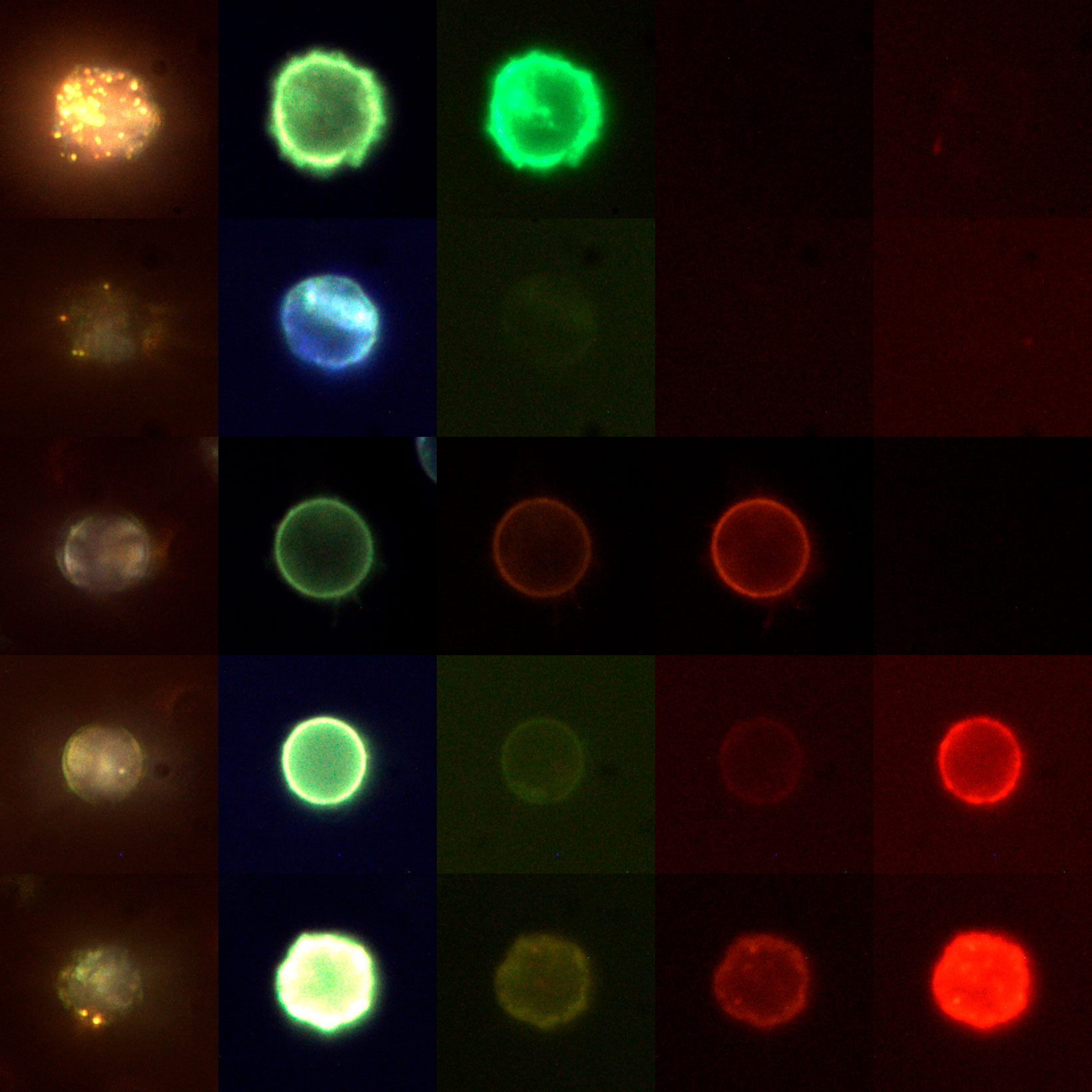Ovarian Cancer
-
There is a long standing need for better diagnosis, prognosis and, most urgently, therapy monitoring of ovarian cancer. The biomarker CA125 found in serum decades ago has not fulfilled this need to the degree it was hoped for.
-
It is now known that when a minuscule amount of CA125 is present on the surface of natural killer cells it inhibits their ability to fight cancerous cells [1]
-
While this knowledge has been demonstrated in cell culture, attempts to detect CA125 on peripheral white blood cells, where it may be diagnostically important, have been inconclusive with fluorescence based techniques
-
To overcome this limitation, PNP Research has developed a new microscopy system that is sensitive to the level of single molecule detection
-
Co-labeling with fluorescent lineage markers allow association of nanoparticle binding to cell subtypes. In this example we can see heavy nanoparticle binding to a monocyte, low binding to a B-cell, very low binding to an NK-T cell and no binding to a T-cell or an NK-cell
-
Our data on a small number of subjects show that the levels of cell-bound CA125 are elevated in ovarian cancer patients [2]. Such elevation is statistically significant on B-Cells, NK-Cells and T-Cells, but not on Monocytes or NK-T-Cells [3]. Further, cell-bound CA125 is not correlated to serum CA125 [3]
-
In addition, we observed a single patient under therapy for 17 months and found that cell-bound CA125 levels rose 5 months earlier than serum CA125 levels [2]
[1] J. A. A. Gubbels et al., “MUC16 provides immune protection by inhibiting synapse formation between NK and ovarian tumor cells,” Mol. Cancer, vol. 9, no. 1, p. 11, Jan. 2010, doi: 10.1186/1476-4598-9-11. [link]
[2] S. Jeong et al., “Plasmonic Nanoparticle-Based Digital Cytometry to Quantify MUC16 Binding on the Surface of Leukocytes in Ovarian Cancer,” ACS Sensors, vol. 5, no. 9, pp. 2772–2782, 2020, doi: 10.1021/acssensors.0c00567.[link]
[3] González, G et al., “Characterization of Cell-Bound CA125 on Immune Cell Subtypes of Ovarian Cancer Patients Using a Novel Imaging Platform” Cancers 2021, 13(9), 2072; https://doi.org/10.3390/cancers13092072 [link]

[1] J. A. A. Gubbels et al., “MUC16 provides immune protection by inhibiting synapse formation between NK and ovarian tumor cells,” Mol. Cancer, vol. 9, no. 1, p. 11, Jan. 2010, doi: 10.1186/1476-4598-9-11. [link]
[2] S. Jeong et al., “Plasmonic Nanoparticle-Based Digital Cytometry to Quantify MUC16 Binding on the Surface of Leukocytes in Ovarian Cancer,” ACS Sensors, vol. 5, no. 9, pp. 2772–2782, 2020, doi: 10.1021/acssensors.0c00567.[link]
[3] González, G et al., “Characterization of Cell-Bound CA125 on Immune Cell Subtypes of Ovarian Cancer Patients Using a Novel Imaging Platform” Cancers 2021, 13(9), 2072; https://doi.org/10.3390/cancers13092072 [link]
